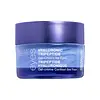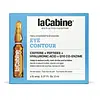What's inside
What's inside
 Key Ingredients
Key Ingredients

 Benefits
Benefits

 Concerns
Concerns

 Ingredients Side-by-side
Ingredients Side-by-side

Water
Skin ConditioningIsododecane
EmollientDimethicone
EmollientGlycerin
HumectantDimethicone Crosspolymer
Emulsion StabilisingPentylene Glycol
Skin ConditioningNeopentyl Glycol Diheptanoate
EmollientPolymethylsilsesquioxane
Myristyl Nicotinate
Skin ConditioningTetrahexyldecyl Ascorbate
AntioxidantButylene Glycol
HumectantCarbomer
Emulsion StabilisingCaprylyl Glycol
EmollientPanthenol
Skin ConditioningCI 77891
Cosmetic ColorantPhenoxyethanol
PreservativeSodium Hydroxide
BufferingHelianthus Annuus Seed Oil
EmollientCitrus Medica Vulgaris Fruit Extract
AntioxidantLens Esculenta Fruit Extract
Skin ConditioningPyrus Malus Fruit Extract
Skin ConditioningNicotiana Benthamiana Octapeptide-30 Sh-Oligopeptide-2
Skin ConditioningParfum
MaskingEthylhexylglycerin
Skin ConditioningHexylene Glycol
EmulsifyingGlyceryl Acrylate/Acrylic Acid Copolymer
HumectantIsohexadecane
EmollientCarnosine
Skin ConditioningDisodium EDTA
Allantoin
Skin ConditioningSodium Hyaluronate
HumectantBenzophenone-4
UV AbsorberSodium Lactate
BufferingGlycine Soja Oil
EmollientAlumina
AbrasiveIsopropyl Titanium Triisostearate
EmollientDunaliella Salina Extract
Skin ConditioningLupinus Albus Seed Extract
Skin ConditioningSodium PCA
HumectantDiglucosyl Gallic Acid
Bacillus/Sea Salt Ferment Filtrate
Skin ConditioningCitric Acid
BufferingEthylene/Propylene/Styrene Copolymer
Lecithin
EmollientSodium Benzoate
MaskingPolyhydroxystearic Acid
EmulsifyingPotassium Sorbate
PreservativeOryza Sativa Extract
AbsorbentBenzyl Benzoate
AntimicrobialPolyglyceryl-3 Diisostearate
EmulsifyingLimonene
PerfumingPalmitoyl Tripeptide-5
Skin ConditioningPantolactone
HumectantButylene/Ethylene/Styrene Copolymer
Silica
AbrasiveGlobularia Alypum Leaf Extract
Skin ConditioningLinalool
PerfumingPlankton Extract
Skin ConditioningCitral
PerfumingCitronellol
PerfumingTocopherol
AntioxidantGeraniol
PerfumingBenzyl Salicylate
PerfumingBenzyl Alcohol
PerfumingCI 42090
Cosmetic ColorantWater, Isododecane, Dimethicone, Glycerin, Dimethicone Crosspolymer, Pentylene Glycol, Neopentyl Glycol Diheptanoate, Polymethylsilsesquioxane, Myristyl Nicotinate, Tetrahexyldecyl Ascorbate, Butylene Glycol, Carbomer, Caprylyl Glycol, Panthenol, CI 77891, Phenoxyethanol, Sodium Hydroxide, Helianthus Annuus Seed Oil, Citrus Medica Vulgaris Fruit Extract, Lens Esculenta Fruit Extract, Pyrus Malus Fruit Extract, Nicotiana Benthamiana Octapeptide-30 Sh-Oligopeptide-2, Parfum, Ethylhexylglycerin, Hexylene Glycol, Glyceryl Acrylate/Acrylic Acid Copolymer, Isohexadecane, Carnosine, Disodium EDTA, Allantoin, Sodium Hyaluronate, Benzophenone-4, Sodium Lactate, Glycine Soja Oil, Alumina, Isopropyl Titanium Triisostearate, Dunaliella Salina Extract, Lupinus Albus Seed Extract, Sodium PCA, Diglucosyl Gallic Acid, Bacillus/Sea Salt Ferment Filtrate, Citric Acid, Ethylene/Propylene/Styrene Copolymer, Lecithin, Sodium Benzoate, Polyhydroxystearic Acid, Potassium Sorbate, Oryza Sativa Extract, Benzyl Benzoate, Polyglyceryl-3 Diisostearate, Limonene, Palmitoyl Tripeptide-5, Pantolactone, Butylene/Ethylene/Styrene Copolymer, Silica, Globularia Alypum Leaf Extract, Linalool, Plankton Extract, Citral, Citronellol, Tocopherol, Geraniol, Benzyl Salicylate, Benzyl Alcohol, CI 42090
Water
Skin ConditioningGlycerin
HumectantKaolin
AbrasiveSodium Hyaluronate
HumectantAcetyl Tetrapeptide-5
HumectantPalmitoyl Tripeptide-5
Skin ConditioningDunaliella Salina Extract
Skin ConditioningPantolactone
HumectantCaprylyl Glycol
EmollientPanthenol
Skin ConditioningEthylhexylglycerin
Skin ConditioningPhenyl Trimethicone
Skin ConditioningSqualane
EmollientTocopheryl Acetate
AntioxidantUbiquinone
AntioxidantLecithin
EmollientAvena Sativa Kernel Extract
AbrasiveSucrose Palmitate
EmollientButylene Glycol
HumectantCaffeine
Skin ConditioningXanthan Gum
EmulsifyingSodium Acrylates Copolymer
Glyceryl Linoleate
EmollientCarbomer
Emulsion StabilisingMenthyl Lactate
MaskingBenzyl Alcohol
PerfumingTriethanolamine
BufferingCitric Acid
BufferingTriethylene Glycol
MaskingSodium Benzoate
MaskingPhenoxyethanol
PreservativePotassium Sorbate
PreservativePhenethyl Alcohol
MaskingWater, Glycerin, Kaolin, Sodium Hyaluronate, Acetyl Tetrapeptide-5, Palmitoyl Tripeptide-5, Dunaliella Salina Extract, Pantolactone, Caprylyl Glycol, Panthenol, Ethylhexylglycerin, Phenyl Trimethicone, Squalane, Tocopheryl Acetate, Ubiquinone, Lecithin, Avena Sativa Kernel Extract, Sucrose Palmitate, Butylene Glycol, Caffeine, Xanthan Gum, Sodium Acrylates Copolymer, Glyceryl Linoleate, Carbomer, Menthyl Lactate, Benzyl Alcohol, Triethanolamine, Citric Acid, Triethylene Glycol, Sodium Benzoate, Phenoxyethanol, Potassium Sorbate, Phenethyl Alcohol
Ingredients Explained
These ingredients are found in both products.
Ingredients higher up in an ingredient list are typically present in a larger amount.
Benzyl Alcohol is most commonly used as a preservative. It also has a subtle, sweet smell. Small amounts of Benzyl Alcohol is not irritating and safe to use in skincare products. Most Benzyl Alcohol is derived from fruits such as apricots.
Benzyl Alcohol has both antibacterial and antioxidant properties. These properties help lengthen the shelf life of products. Benzyl Alcohol is a solvent and helps dissolve other ingredients. It can also improve the texture and spreadability.
Alcohol comes in many different forms. Different types of alcohol will have different effects on skin. This ingredient is an astringent alcohol.
Using high concentrations of these alcohols are drying on the skin. They may strip away your skin's natural oils and even damage your skin barrier. Astringent alcohols may also irritate skin.
Other types of astringent alcohols include:
According to the National Rosacea Society based in the US, you should be mindful of products with these alcohols in the top half of ingredients.
Any type of sanitizing product will have high amounts of alcohol to help kill bacteria and viruses.
Learn more about Benzyl AlcoholButylene Glycol (or BG) is used within cosmetic products for a few different reasons:
Overall, Butylene Glycol is a safe and well-rounded ingredient that works well with other ingredients.
Though this ingredient works well with most skin types, some people with sensitive skin may experience a reaction such as allergic rashes, closed comedones, or itchiness.
Learn more about Butylene GlycolCaprylyl Glycol is a humectant and emollient, meaning it attracts and preserves moisture.
It is a common ingredient in many products, especially those designed to hydrate skin. The primary benefits are retaining moisture, skin softening, and promoting a healthy skin barrier.
Though Caprylyl Glycol is an alcohol derived from fatty acids, it is not the kind that can dry out skin.
This ingredient is also used as a preservative to extend the life of products. It has slight antimicrobial properties.
Learn more about Caprylyl GlycolCarbomer is a polymer of acrylic acid. Its main role is to create a gel consistency.
A high amount of carbomer can cause pilling or balling up of products. Don't worry, most products contain 1% or less of carbomer.
Citric Acid is an alpha hydroxy acid (AHA) naturally found in citrus fruits like oranges, lemons, and limes.
Like other AHAs, citric acid can exfoliate skin by breaking down the bonds that hold dead skin cells together. This helps reveal smoother and brighter skin underneath.
However, this exfoliating effect only happens at high concentrations (20%) which can be hard to find in cosmetic products.
Due to this, citric acid is usually included in small amounts as a pH adjuster. This helps keep products slightly more acidic and compatible with skin's natural pH.
In skincare formulas, citric acid can:
While it can provide some skin benefits, research shows lactic acid and glycolic acid are generally more effective and less irritating exfoliants.
Most citric acid used in skincare today is made by fermenting sugars (usually from molasses). This synthetic version is identical to the natural citrus form but easier to stabilize and use in formulations.
Read more about some other popular AHA's here:
Learn more about Citric AcidWe don't have a description for Dunaliella Salina Extract yet.
Ethylhexylglycerin (we can't pronounce this either) is commonly used as a preservative and skin softener. It is derived from glyceryl.
You might see Ethylhexylglycerin often paired with other preservatives such as phenoxyethanol. Ethylhexylglycerin has been found to increase the effectiveness of these other preservatives.
Glycerin is already naturally found in your skin. It helps moisturize and protect your skin.
A study from 2016 found glycerin to be more effective as a humectant than AHAs and hyaluronic acid.
As a humectant, it helps the skin stay hydrated by pulling moisture to your skin. The low molecular weight of glycerin allows it to pull moisture into the deeper layers of your skin.
Hydrated skin improves your skin barrier; Your skin barrier helps protect against irritants and bacteria.
Glycerin has also been found to have antimicrobial and antiviral properties. Due to these properties, glycerin is often used in wound and burn treatments.
In cosmetics, glycerin is usually derived from plants such as soybean or palm. However, it can also be sourced from animals, such as tallow or animal fat.
This ingredient is organic, colorless, odorless, and non-toxic.
Glycerin is the name for this ingredient in American English. British English uses Glycerol/Glycerine.
Learn more about GlycerinLecithin is a term for a group of substances found in the cell membranes of plants, animals, and humans. They are made up of mixture of phospholipids.
This ingredient has emollient and emulsifying properties.
As an emollient, lecithen helps soften the skin and creates a barrier to keep moisture in.
As an emulsifier, it also helps prevent water and oil ingredients from separating. Lecithin can also help ingredients be better absorbed by the skin.
This is because the phospholipids in lecithin produce liposomes. Liposomes help other ingredients get through the skin barrier.
Depending on the source of this ingredient, lecithin may not be fungal acne safe. This is because some sources of lecithin come from soybean oil, which may feed the malassezia yeast that feeds fungal acne.
We recommend reaching out to the brand you are purchasing from to inquire about the source of their lecithin.
Some other names for this ingredient include soy lecithin and deoiled soy lecithin.
Learn more about LecithinThis synthetic peptide is created from lysine, valine, and palmitic acid.
According to the manufacturer, in-vitro studies show tissue growth and collagen synthesis. Another in-vivo study found 60 volunteers saw a significant reduction in wrinkles after 84 days.
Due to its palmitic acid base, this peptide may not be fungal-acne safe.
Learn more about Palmitoyl Tripeptide-5Panthenol is a common ingredient that helps hydrate and soothe the skin. It is found naturally in our skin and hair.
There are two forms of panthenol: D and L.
D-panthenol is also known as dexpanthenol. Most cosmetics use dexpanthenol or a mixture of D and L-panthenol.
Panthenol is famous due to its ability to go deeper into the skin's layers. Using this ingredient has numerous pros (and no cons):
Like hyaluronic acid, panthenol is a humectant. Humectants are able to bind and hold large amounts of water to keep skin hydrated.
This ingredient works well for wound healing. It works by increasing tissue in the wound and helps close open wounds.
Once oxidized, panthenol converts to pantothenic acid. Panthothenic acid is found in all living cells.
This ingredient is also referred to as pro-vitamin B5.
Learn more about PanthenolPantolactone is a synthetically created humectant.
As a humectant, Pantolactone helps draw moisture to the skin. It can help add hydration to your skin.
Phenoxyethanol is a preservative that has germicide, antimicrobial, and aromatic properties. Studies show that phenoxyethanol can prevent microbial growth. By itself, it has a scent that is similar to that of a rose.
It's often used in formulations along with Caprylyl Glycol to preserve the shelf life of products.
Potassium Sorbate is a preservative used to prevent yeast and mold in products. It is commonly found in both cosmetic and food products.
This ingredient comes from potassium salt derived from sorbic acid. Sorbic acid is a natural antibiotic and effective against fungus.
Both potassium sorbate and sorbic acid can be found in baked goods, cheeses, dried meats, dried fruit, ice cream, pickles, wine, yogurt, and more.
You'll often find this ingredient used with other preservatives.
Learn more about Potassium SorbateSodium Benzoate is a preservative. It's used in both cosmetic and food products to inhibit the growth of mold and bacteria. It is typically produced synthetically.
Both the US FDA and EU Health Committee have approved the use of sodium benzoate. In the US, levels of 0.1% (of the total product) are allowed.
Sodium benzoate works as a preservative by inhibiting the growth of bacteria inside of cells. It prevents the cell from fermenting a type of sugar using an enzyme called phosphofructokinase.
It is the salt of benzoic acid. Foods containing sodium benzoate include soda, salad dressings, condiments, fruit juices, wines, and snack foods.
Studies for using ascorbic acid and sodium benzoate in cosmetics are lacking, especially in skincare routines with multiple steps.
We always recommend speaking with a professional, such as a dermatologist, if you have any concerns.
Learn more about Sodium BenzoateSodium Hyaluronate is hyaluronic acid's salt form. It is commonly derived from the sodium salt of hyaluronic acid.
Like hyaluronic acid, it is great at holding water and acts as a humectant. This makes it a great skin hydrating ingredient.
Sodium Hyaluronate is naturally occurring in our bodies and is mostly found in eye fluid and joints.
These are some other common types of Hyaluronic Acid:
Learn more about Sodium HyaluronateWater. It's the most common cosmetic ingredient of all. You'll usually see it at the top of ingredient lists, meaning that it makes up the largest part of the product.
So why is it so popular? Water most often acts as a solvent - this means that it helps dissolve other ingredients into the formulation.
You'll also recognize water as that liquid we all need to stay alive. If you see this, drink a glass of water. Stay hydrated!
Learn more about Water